PZA Union Cross — Technical Guide to One‑Touch Pneumatic Cross Fittings for Compressed Air Systems
The PZA Union Cross is a one‑touch pneumatic fitting designed for fast, tool‑free routing and redistribution of compressed air in compact or confined installations. Combining a push‑in (one‑touch) tube retention mechanism with a PC‑type body and sealed threaded joints, the PZA Union Cross enables installers and maintenance engineers to build reliable, low‑leak pneumatic networks quickly. This article provides a comprehensive, technical overview of the PZA Union Cross, covering specifications, materials, installation best practices, maintenance, use cases, and comparisons with alternative fittings.
Introduction
Fittings are a critical, yet often overlooked, component of pneumatic systems. They determine leak performance, ease of assembly, adaptability to confined spaces, and serviceability. The PZA Union Cross targets these needs by combining a one‑touch push‑in interface on all four ports with a compact, PC‑type cross body and preapplied thread sealing on the threaded joints. The result is a compact 4‑way distribution fitting that can be installed without specialized tools, while maintaining rated pressure and vacuum capability for typical industrial compressed‑air applications.
This technical guide is written for engineers, maintenance technicians, and system integrators who specify, install, or service compressed air systems. The focus is on practical, technical detail: operating limits, mechanical properties, dimensional data, compatibility, and best‑practice procedures to achieve reliable, leak‑free installations.
Technical Overview
The PZA Union Cross is a one‑touch (push‑in) union cross fitting. It is intended to join four lengths of polyurethane, nylon, or polyethylene tubing in a cross configuration while providing sealed threaded joints where the assembly interfaces to manifolds, components, or panel bulkheads. The key functional behaviors include:
- One‑touch tube retention: Tubing is secured by inserting it into the push‑in port until it bottoms; the internal collet clamps the tube without additional tools. Tubes can be released quickly by depressing the sleeve and pulling the tube out.
- PC‑type body: The body incorporates hexagonal internal/external surfaces to facilitate routing, orientation control, and secure mounting or holding by a wrench when tightening threaded ports — useful in tight spaces.
- Sealed threaded joints: Threaded ports are supplied with a factory seal coating, reducing assembly time and preventing leakage at the threads when installed to recommended engagement/tightening levels.
- Compressed‑air optimized: The PZA series is specified for compressed‑air service only. The product supports positive pressure up to rated limits and vacuum service down to the stated vacuum capability.
Typical application environments include assembly automation, machine tool air distribution, pick‑and‑place vacuum circuits (pilot air), pneumatic actuation manifolds, and compact instrumentation panels where space is at a premium.
Operating Parameters
- Working pressure: 0–150 PSI (0–9.9 kgf/cm², 0–990 kPa)
- Vacuum capability: Down to -29.5 in Hg (-750 mm Hg, ~10 Torr)
- Temperature range: 0–60 °C (32–140 °F)
- Recommended medium: Compressed air (dry, lubricated, or non‑aggressive gas compatible with body and seal materials)
- Tube compatibility: PZA models available for metric tube OD: Ø4, Ø6, Ø8, Ø10, Ø12, Ø16 mm (models PZA 04, 06, 08, 10, 12, 16) and inch tube sizes: 5/32″, 3/16″, 1/4″, 5/16″, 3/8″, 1/2″ (PZA 5/32 … 1/2)
Model Nomenclature and Coding
Model codes use a clear format that indicates the series, tube diameter, and thread size. For example: PC 06 1/8 decodes as:
- PC — PC‑type body (hexagonal surfaces)
- 06 — Tube diameter of 6 mm
- 1/8 — Thread size on the threaded ports (1/8″ nominal)
Confirm thread standard (BSPP, NPT, or other) with the supplier for market‑specific options; many PZA series fittings are offered in BSPP (G) for European markets and NPT for North American markets.
Specifications and Dimensions
The following tables summarize the key dimensional and physical attributes across the PZA family. Dimensions are representative and intended for system layout and hose routing; always consult manufacturer CAD drawings or sample parts for precise mounting and clearance checks.
| Parameter | Value / Range |
|---|---|
| Working pressure | 0–150 PSI (0–9.9 kgf/cm², 0–990 kPa) |
| Proof pressure (typical) | ~300 PSI (verify with datasheet) |
| Vacuum capability | Down to -29.5 in Hg (-750 mm Hg, ~10 Torr) |
| Operating temperature | 0–60 °C (32–140 °F) |
| Recommended medium | Compressed air (dry or instrument‑air quality) |
| Tube types supported | Polyurethane, nylon, polyethylene (check wall thickness compatibility) |
| Thread sealing | Factory preapplied seal coating (do not overapply additional tape unless replacing) |
Below is a representative dimensional table by model. Dimensions are approximate; confirm with manufacturer drawings for critical clearance or mounting designs.
| Model | Tube OD | Thread Size (nominal) | Across Flats (hex) (mm) | Overall Width (mm) | Overall Height (mm) | Thread Length (mm) | Approx. Weight (g) |
|---|---|---|---|---|---|---|---|
| PZA 04 | Ø4 mm | 1/8″ or M5 (market dependent) | 10 | 26 | 26 | 8 | 8 |
| PZA 06 | Ø6 mm | 1/8″ or 1/8 BSPP | 12 | 30 | 30 | 8–9 | 12 |
| PZA 08 | Ø8 mm | 1/4″ or 1/8–1/4 BSPP | 14 | 34 | 34 | 9 | 18 |
| PZA 10 | Ø10 mm | 1/4″ | 16 | 38 | 38 | 10 | 28 |
| PZA 12 | Ø12 mm | 3/8″ | 18 | 44 | 44 | 11 | 42 |
| PZA 16 | Ø16 mm | 1/2″ | 22 | 52 | 52 | 12 | 68 |
| PZA 5/32 (inch) | 5/32″ | 1/8″ | 10 | 26 | 26 | 8 | 7 |
| PZA 1/4 (inch) | 1/4″ | 1/8″ or 1/4″ | 14 | 34 | 34 | 9 | 18 |
Note: Dimensions and weights are representative estimates intended for layout planning only. Always request certified mechanical drawings or 3D CAD files from the manufacturer for final component placement, clash checks, and BOM verification.
Materials and Build Quality
PZA Union Cross fittings are designed to balance mechanical strength, chemical compatibility, manufacturability, and cost. The typical material choices and their technical rationale are as follows:
- Body material (typical): Engineering thermoplastics such as polyacetal (POM), polybutylene terephthalate (PBT), or high‑strength nylon. These materials provide high dimensional stability, low friction for internal moving parts (collet/sleeve), and good wear resistance under cyclic pushing/pulling of tube inserts.
- Collet and sleeve: Often manufactured from the same or complementary engineered plastics with integrated stainless steel release teeth or a stainless steel retaining ring for secure tube grip and lifetime durability.
- Thread inserts / metal reinforcement: For larger thread sizes or when metal threads are necessary for mechanical strength, a brass or stainless steel threaded insert may be overmolded or press‑fitted into the plastic body. This improves resistance to thread stripping and provides better torque handling.
- Seals: Elastomeric O‑rings and seals are commonly NBR (nitrile) for general compressed‑air use. Where higher temperature or chemical resistance is required, FKM (Viton) may be specified. The sealing elements are sized and seated to maintain pressure rating while enabling vacuum capability.
- Thread seal coating: Factory‑applied anaerobic or PTFE‑based seal coatings are used to achieve controlled leakage performance at the threads and to speed assembly. This minimizes the need for field‑applied tape or paste, which can introduce inconsistent torque or contamination.
Build quality considerations:
- Dimensional tolerance control: Critical internal bores, collet teeth geometry, and O‑ring grooves are manufactured to tight tolerances to ensure consistent push‑in force, retention force, and leak tightness.
- Surface finish: Smooth internal bore finishes reduce flow turbulence and particle entrapment, improving flow efficiency and reducing wear on tubing.
- Material traceability: For industrial applications, batch traceability and material certification (RoHS/REACH compliance) are typical deliverables from reputable suppliers.
Always verify the documented material specifications for the exact PZA SKU you purchase; some model variants may include metal inserts, different elastomers, or alternative body plastics intended for specialized markets.
Key Features
- One‑touch operation: Push‑in retention and quick release sleeve allow rapid assembly and disassembly without tools.
- Compact PC‑type design: Hexagonal internal/external geometry simplifies wrench access and positioning in confined spaces.
- Thread seal coating: Factory‑applied sealant reduces assembly steps and ensures consistent, factory‑validated leakage performance at threaded joints.
- Wide size range: Supports metric and inch tube diameters, enabling global applicability across machine types and regional tubing standards.
- Vacuum capable: Negative pressure operation down to approximately -29.5 in Hg makes it suitable for vacuum pickup and gripper circuits (with compatible tubing and seals).
- Tool‑free maintenance: Collet‑release mechanism makes in‑service replacement of tubing fast and safe.
- Reliable retention: Designed to resist pull‑out loads encountered in typical pneumatic systems and dynamic machine motion.
Use Cases and Applications
The PZA Union Cross is versatile and useful across multiple industry verticals where compressed air distribution, pilot air splitting, or compact routing is required. Typical use cases include:
1. Machine Tool and Factory Automation
Air distribution networks within CNC machines, assembly cells, and stamping machines often require multiple branches in tight enclosures. PZA Union Cross fittings provide compact 4‑way splitting for pilot valves, blow‑off circuits, and actuator supply lines where space is constrained and rapid maintenance access is required.
2. Pick‑and‑Place and Robotics
Robotic vacuum end‑effector systems commonly employ small pilot lines and vacuum channels; the PZA Union Cross supports vacuum capability for gripper circuits and enables routing to multiple suction cups or vacuum sensors while maintaining quick serviceability.
3. Packaging and Food Machinery
High‑speed packaging machinery often relies on compact pneumatic manifolds to drive cylinders, clamps, and ejectors. The PZA cross can be used to split an air feed to several actuators in a confined head, making changeovers and tube replacement fast and less error‑prone.
4. Instrumentation and Test Rigs
Test stands and instrumentation panels with multiple pneumatic probes or actuators require precise, leak‑free distribution. The presealed threaded joints and reliable push‑in connections reduce the likelihood of measurement error due to leakage.
5. Mobile Equipment and Vehicle Systems
In mobile hydraulic/pneumatic systems where weight and space are limited, the PZA Union Cross offers a lightweight, tool‑free solution for distributing air to braking systems, doors, or other auxiliary pneumatic functions—subject to vehicle OEM approval and environmental compatibility.
Comparison with Other Fitting Types
Below is a technical comparison table positioning the PZA Union Cross against two common alternatives: a standard push‑in cross fitting without PC‑type features, and a metal threaded cross fitting. This comparison emphasizes attributes relevant to engineers selecting fittings for systems design.
| Attribute | PZA Union Cross | Standard Push‑In Cross | Metal Threaded Cross |
|---|---|---|---|
| Body material | Engineering plastic (POM/PBT), optional metal inserts | Plastic (POM/PA) | Brass / Stainless steel |
| Tool‑free tube connection | Yes (one‑touch) | Yes (one‑touch) | No (requires ferrules or compression fittings) |
| Thread sealing | Factory seal coating | Usually none / may require tape | Metal threads, require PTFE tape or paste |
| Compactness / hex features | PC‑type hex surfaces for wrenching | May lack hex features | Bulkier; better mechanical strength |
| Pressure rating | Up to 150 PSI (990 kPa) | Similar to PZA for same materials | Typically higher; metal fittings can exceed 300 PSI |
| Vacuum capability | Down to -29.5 in Hg | Varies—many support vacuum | Varies—often supports vacuum depending on seal |
| Resistance to mechanical abuse | Moderate; includes metal thread reinforcements in larger sizes | Lower; pure plastic can strip threads easier | High; metal withstands higher torque and shock |
| Cost | Mid (economical for production volumes) | Lower | Higher |
Selection should be based on application priorities: if compactness, tool‑free maintenance, and assembly speed matter most, PZA Union Cross is a strong candidate. For very high pressure or abusive mechanical environments, a metal fitting may be prudent.
Benefits and Limitations — Technical Perspective
Benefits
- Rapid assembly and maintenance: One‑touch tube insertion and quick release reduce downtime for commissioning and repairs.
- Compact footprint with wrench flats: PC‑type hex features facilitate installation in confined or panelized assemblies where space and orientation control are critical.
- Factory thread sealing: Minimizes assembly variability and reduces the risk of thread leaks during manual assembly by technicians.
- Wide size compatibility: Supports both metric and imperial tubing, simplifying BOMs in mixed installations.
- Vacuum capable: Enables dual use in vacuum and compressed air pilot circuits.
Limitations
- Material limits: Plastic body and elastomer seals restrict maximum temperature and may be incompatible with aggressive chemicals—verify media compatibility prior to use.
- Pressure ceiling: Rated to 150 PSI; heavier industrial systems operating at higher pressures require metal fittings with higher ratings.
- Mechanical shock sensitivity: While robust for normal machine duty, excessive impact or overtightening of plastic threads can cause damage—follow recommended torque and handling procedures.
- Tubing selection impact: Retention and leak tightness depend on using the specified tubing material and correct wall thickness. Using incorrect tubing may compromise retention force and seal integrity.
Installation and Maintenance Best Practices
To achieve reliable, long‑term operation, adhere to these technical installation and maintenance guidelines. They are applicable to production assembly, field maintenance, and lab/test bench setups.
Pre‑installation Checks
- Verify the PZA model variant against tubing OD, thread size, and thread standard (BSPP, NPT, etc.).
- Inspect the fitting visually for shipping damage, flash, or particulate contamination. Ensure the factory thread seal coating is intact.
- Confirm tubing material and wall thickness are compatible with the fitting’s retention collet and the application (temperature, vacuum, chemical exposure).
- Ensure the system will operate within the stated pressure and temperature ranges.
Tube Preparation
- Cut tubing squarely using a proper tube cutter. Avoid crushing or angled cuts; uneven cuts create sealing problems.
- Remove any burrs or loose particles with a light deburring tool; then clean the tubing end with compressed air or a lint‑free cloth.
- For reinforced or composite tubing, confirm the tubing end will fully seat into the push‑in port; if wall thickness is excessive, the tube may not bottom out correctly.
Assembly Steps
- If connecting threaded ports to a manifold or panel, use the factory‑applied seal coating provided. Where the coating is absent (replacement part or custom assembly), use a thin layer of PTFE tape or anaerobic sealant—apply per manufacturer guidance.
- Hand‑thread the fitting engagement for the first several turns to ensure correct alignment and avoid cross‑threading. Use the hex flats to apply the final tightening wrench force.
- Do not exceed the recommended tightening torque for plastic bodies. As a rule of thumb, avoid applying more torque than necessary to achieve full engagement and seal; overtightening risks cracking or stripping. Check manufacturer torque guidelines where provided.
- Fully insert tubing into the push‑in port until it bottoms out. A tactile click or stop is usually felt; verify by gently pulling the tubing to ensure retention.
Note: The PZA Union Cross design uses a push‑in collet with metal teeth or stainless steel claws (depending on SKU). Ensure that tubing is fully inserted to engage the teeth properly. Do not rely on partial insertion.
Leak Testing and Commissioning
- Pressurize the circuit to operating pressure and hold for an initial leak test. Observe pressure decay over an appropriate stabilization period.
- Use an approved leak detection solution or an ultrasonic/leak detector for faster identification of small leaks around threaded joints and push‑in ports.
- If a threaded joint leaks, depressurize the circuit, disassemble, clean mating surfaces, and reapply the manufacturer‑approved thread sealant. Reinstall carefully, avoiding overtightening.
- For tube port leaks, remove the tube and inspect the end face and collet teeth for damage. Replace damaged tubing or fitting as required.
Routine Maintenance
- Inspect fittings periodically (during preventive maintenance cycles) for external damage, discoloration, or leakage.
- Replace O‑rings and seals on a scheduled basis if the system operates in a harsh environment or with lubricated air containing contaminants that accelerate elastomer degradation.
- Clean external surfaces and remove particulate accumulations that could abrade tubing or cause misalignment.
- Confirm retention force after reassembling after long shutdowns or after tubing replacement to ensure the collet teeth remain functional.
Troubleshooting Common Issues
Common failure modes include leak at the threaded interface, tube pull‑out, and slow leaks due to contaminated seal surfaces. Recommended corrective actions:
- Thread leaks: Disassemble, clean threads, reapply approved sealant, and reinstall to controlled torque. Replace the fitting if plastic threads show stripping.
- Tube pull‑out: Verify correct tubing size and wall thickness. Confirm the tubing end is square and fully inserted. Replace the fitting if collet teeth are deformed.
- Intermittent vacuum loss: Inspect O‑rings for nicks or chemical degradation. Replace seals with a compatible material (e.g., FKM for oil‑containing air).
- Flow restriction: Check for internal debris; flush the system with filtered air and install an in‑line filter upstream to prevent reoccurrence.
Design Considerations When Specifying PZA Union Cross Fittings
When integrating PZA Union Cross fittings into a system design, consider the following technical aspects to ensure robust operation:
Tubing Material and Wall Thickness
Tubing must be compatible with the collet retention mechanism and the application environment. Typical recommendations:
- Polyurethane (PU) tubing for general‑purpose pneumatic control: flexible, good abrasion resistance, and compatible with push‑in fittings.
- Nylon (PA) tubing for higher temperature or slightly higher pressure circuits: less flexible but more dimensional stability.
- Polyethylene tubing for low cost and low stiffness requirements—verify push‑in retention compatibility.
Wall thickness impacts the effective inner diameter and the ability of the collet to bite into the tubing for retention. Use manufacturer tubing specifications for guaranteed compatibility.
Routing and Flexibility
Even though push‑in fittings are robust, avoid repeated, sharp bending or flexing at the tube entry point. Use bend supports, clips, or spiral wrap where tubes experience frequent motion or vibration.
Environmental and Chemical Exposure
If the fitting will be exposed to oils, solvents, cleaners, or high humidity, confirm the elastomer type (NBR vs FKM) and plastic body compatibility. Corrosive environments may require stainless steel or metal fittings instead.
Panel Mounting and Mechanical Support
Use the hex flats on the PC‑type body to hold the fitting steady during tightening, and provide mechanical support to tubing runs to prevent torque or bending loads being transferred to the fitting body over time.
Regulatory, Safety, and Quality Considerations
When deploying PZA Union Cross fittings in production or safety‑critical systems, verify compliance to applicable standards and best practices:
- ISO 4414 (Pneumatic fluid power — General rules and safety requirements for systems and their components).
- Local pressure equipment directives where applicable (check national regulations if using in pressurized assemblies beyond simple components).
- RoHS and REACH substance compliance for material selection in regulated markets.
- Traceability: for high‑reliability installations, request batch numbers and material certifications from the supplier.
Follow lockout/energy isolation procedures before servicing pneumatic circuits. Always depressurize lines before disassembling fittings.
Example Implementation Scenarios (Detailed)
Scenario A — Compact Pick‑and‑Place Vacuum Circuit
Application: A six‑suction vacuum gripper requires multiple small vacuum feeds and a single pilot air line to the vacuum generator. Space inside the end effector is limited.
Solution: Use a PZA 06 Union Cross to split a vacuum feed into four directions: two lines to suction pads, one to a vacuum sensor, and one to a miniature ejector. The hex flats allow the fitting to be oriented precisely and held while tightening to the vacuum generator’s port. The PZA’s vacuum capability ensures acceptable hold force for pickups, while the push‑in ports permit quick pad replacement in field service.
Scenario B — Panelized Pneumatic Manifold
Application: A control panel needs a compact distribution point for pilot air to multiple valves. The builder requires clean, leak‑free threaded connections to manifold ports and fast assembly on the production line.
Solution: Use PZA 10 Union Cross fittings on manifold ports with factory thread sealing. Tube runs to solenoid valves are connected with push‑in tubing. During production, assembly time is reduced by avoiding manual application of sealing tape and by using one‑touch connections. Leak testing is simplified due to predictable thread sealing performance.
Ordering Guidance and Spare Parts
When ordering PZA Union Cross fittings, collect the following minimum information to avoid configuration errors:
- Model series (PZA)
- Tube OD and metric/imperial designation (e.g., 06 for Ø6 mm or 1/4″ inch)
- Thread size and thread standard (e.g., 1/8″ BSPP, 1/4″ NPT)
- Seal material preference if operating outside standard temperature or chemical conditions (ask for NBR or FKM options)
- Quantity and any requested traceability (batch number, material certificates)
Common spare parts to stock:
- Replacement O‑rings or seal kits
- Replacement collets or sleeves for damaged release mechanisms
- Sample fittings in each tube size for assembly validation
Conclusion
The PZA Union Cross is a purpose‑built, one‑touch pneumatic cross fitting that addresses modern compressed‑air system needs for compactness, quick assembly, and reliable sealing. Its PC‑type hexagonal body design, factory thread sealing, and vacuum capability make it a practical choice for automation, packaging, machine paneling, and robotic vacuum applications.
From a systems engineering perspective, the PZA Union Cross offers a balanced compromise between size, serviceability, and performance. It streamlines assembly and maintenance through tool‑free tube connections while providing predictable thread seal performance for reliable installations. As with all components, successful deployment depends on correct sizing, compatible tubing selection, and adherence to installation and maintenance best practices outlined in this guide.
For precise engineering integration, request manufacturer CAD geometry, certified test reports, and exact material declarations to confirm compatibility with your application’s environmental and regulatory requirements.
Appendix — Quick Reference
- Working pressure: 0–150 PSI (0–990 kPa)
- Vacuum capability: Down to -29.5 in Hg (-750 mm Hg)
- Temperature range: 0–60 °C (32–140 °F)
- Tube sizes: Ø4–Ø16 mm (metric) and 5/32″–1/2″ (inch)
- Typical body materials: POM / PBT / Nylon (confirm SKU)
- Seal materials: NBR (typical); FKM available for specialty applications
- Installation tip: Cut tubing squarely, insert fully, and use the hex flats to avoid overtightening threads.
If you need a downloadable CAD file, torque guidelines for specific thread types, or material certificates for compliance purposes, contact your supplier or the manufacturer’s technical support with the exact PZA part code.

 Tiếng Việt
Tiếng Việt
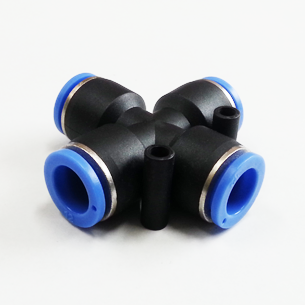
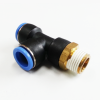
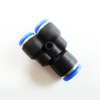
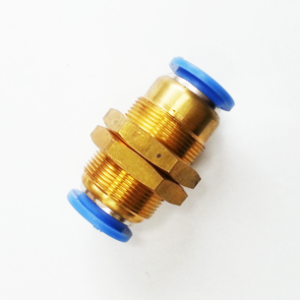
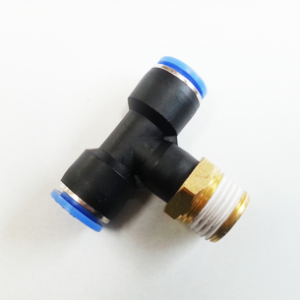
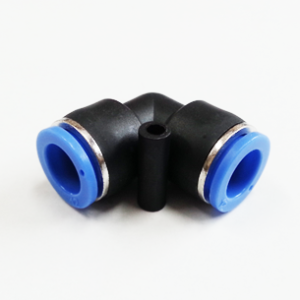
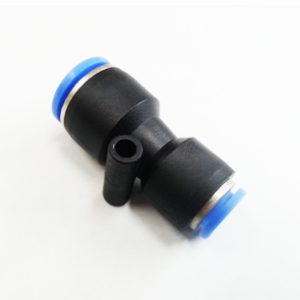
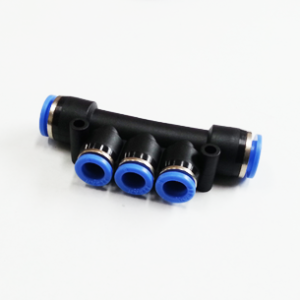
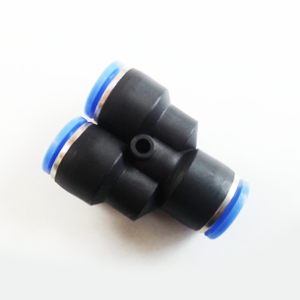
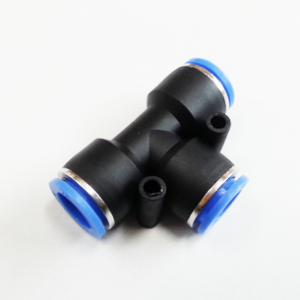
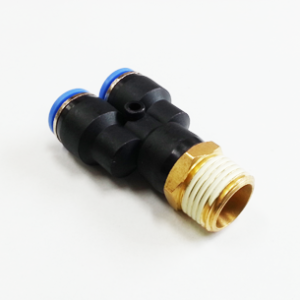
Reviews
There are no reviews yet.